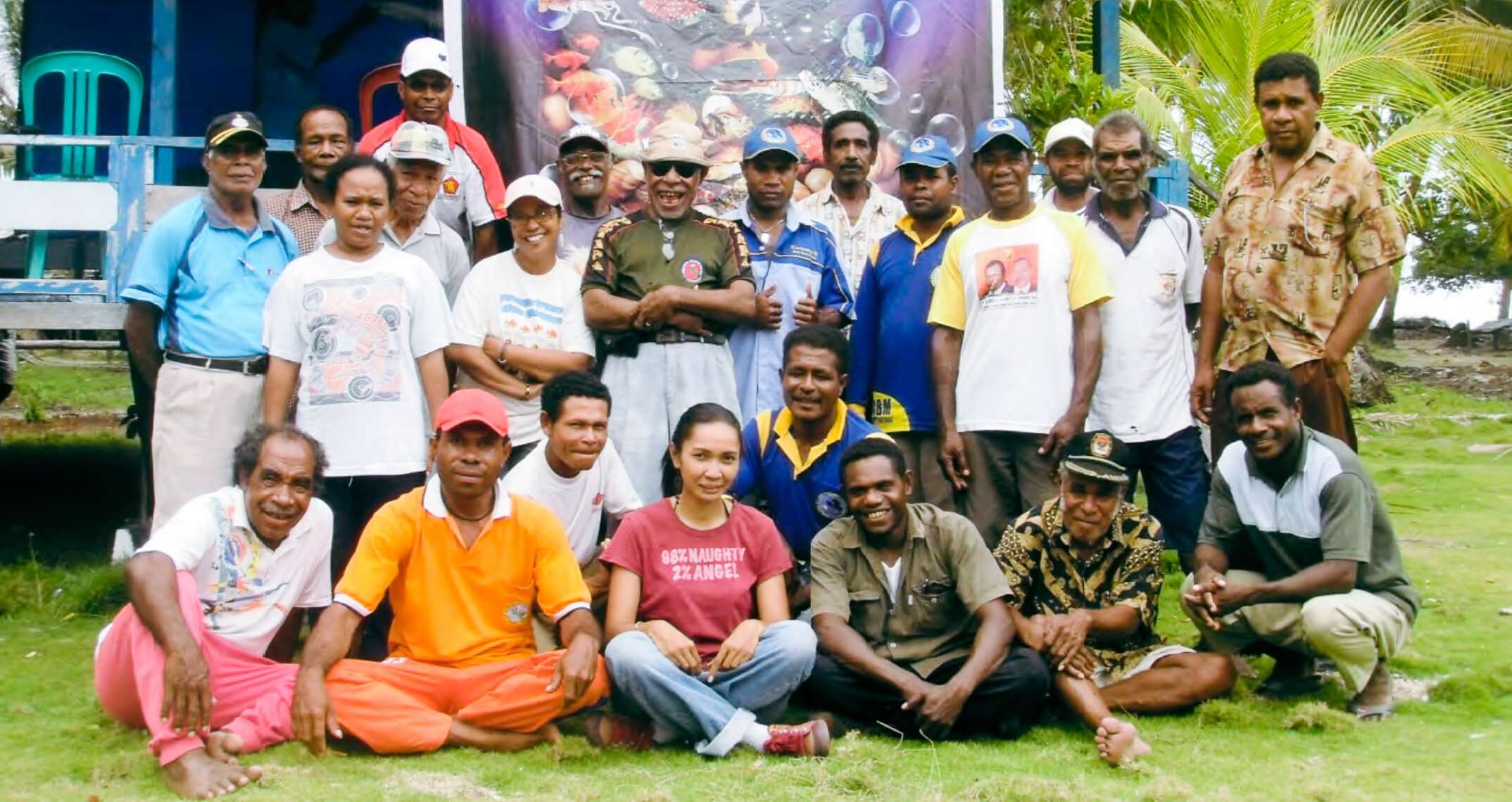Sea sasisen has existed since ancient times and passed down from generation to generation to sustain highly valued species such as trochus, sea cucumbers and batu laga (jewellery shell).
Sea sasisen – a traditional management system in which marine areas are temporarily closed to build up stocks of key marine species.
But as village populations increase which places pressure on livelihoods, including cash income and basic needs and other developmental aspirations, marine resources once sustained through traditional management alone face overharvesting.
Creating customary regulations through establishing an LMMA provide communities with an option to integrate science-based methods with traditional management.
On Hatta Island, in the southern part of the Banda Naira in the Banda Islands, sea sasisen has been long-held practised. Although when saisen was open, there were no rules on size limits which meant harvests were primarily undersized. This harvesting practice became increasingly unsustainable, and the community became concerned.
The community were encouraged to hear about the concept of LMMA when ILMMA visited the village in 2013.
Through some initial investigations and monitoring of key species, a Hatta Island Conservation Team was formed, representing all community levels, including civil government, traditional institutions, religious leaders, and community leaders. The team was tasked to establish an LMMA, which integrated the concept of sea saisen and include fisheries management regulations.
Among the set of rules, the community decided to only allow trochus that are a minimum of 7cm size to harvested and forbid people to hire an outsider to replace them if they cannot harvest on their own. Monitoring of the size of trochus was undertaken every six months to monitor the effectiveness of new customary regulations. This work also confirmed the location of no-take zones. After the community finished drafting the rules, they were review by an expert in constitutional and customary laws to avoid overlap or violate the laws or regulations issued by the Indonesian government.
After going through a long process, on December 9, 2014, Customary Regulation on Terrestrial, Coastal and Marine Natural Resources Management and maps of the sea area designation were formally endorsed in a traditional ceremony.
“Katong su lala deng akang, jadi harus dijaga (we have struggled to make the rules, so it must be enforced),” Bapa La Eci traditional leader, Hatta Island.
At the beginning of harvest seasons, announcements are made, and compliance is undertaken to ensure that undersize trochas are not taken and not taken from no-take zones. Any small trochus found corresponding to the new Customary Regulation must be destroyed by burning trochus. The ashes are then taken the Adat Leader to be used for specific custom betel nut and by other people for medicine.



